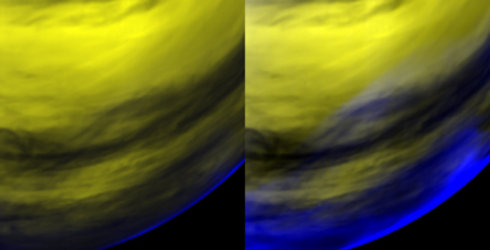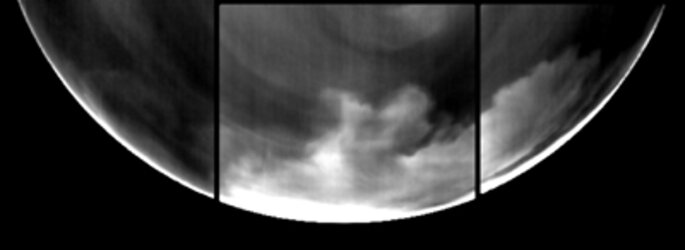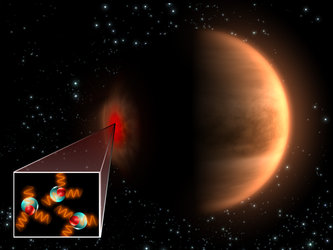

Oxygen airglow production schematic
This sketch shows the mechanism that leads to the production of the oxygen airglow in the upper atmosphere of Venus’ night-side.
At high altitudes in the atmosphere, on the day-side, the strong flux of ultraviolet radiation coming from the Sun breaks the molecules of carbon dioxide (CO2) present in large quantities in the atmosphere, liberating oxygen atoms. These atoms are then transported by the so-called sub-solar and anti-solar atmospheric circulation towards the night side of the planet. Here the atoms migrate from the high atmosphere to a lower layer, called the mesosphere, where they recombine into oxygen (O2). By doing this, they emit light at specific wavelengths, with the strongest emission in the infrared.
The images used to produce the sketch were obtained by the Visible and Infrared Thermal Imaging Spectrometer (VIRTIS) onboard ESA’s Venus Express, and provide a view of the southern hemisphere of the planet.





